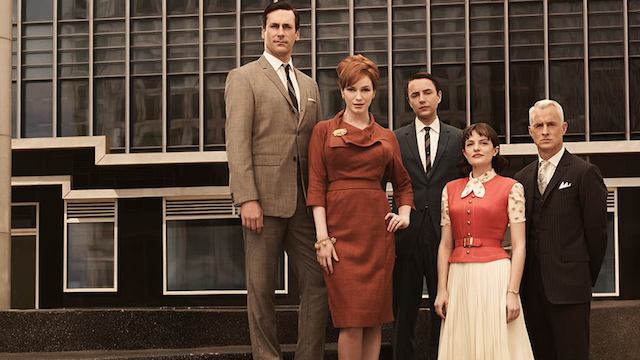The iconic television series, Mad Men, recently ended its seven-season run. In the graphic opening title sequence, a suited ad exec tumbles from a skyscraper to the sidewalk, past images of brands and advertising campaigns. The demise of Don Draper? That’s how many viewers saw it, right up to the final scene. For the sake of this column, however, I am going to read it as symbolic of the fall from grace of consumer marketing.
The Mad Men era of the 50s, 60s, and early 70s was the heyday for consumer marketing. The practice came of age in the US post-WWII, when freedom brought prosperity and a wave of goods to be acquired by the rising middle class.
Advertising was employed to encourage consumers to fill their homes with washing machines and refrigerators, fill their driveways with long, finned automobiles, and fill their lungs with smoke from their Lucky Strike cigarettes.
Guys like Don Draper used every trick in the book to market to the new consumers. In the first episode of the first season of Mad Men, Draper says, “What you call love was invented by guys like me to sell nylons.”
For ad execs (and the brand owners and retailers they served), these were the martini-soaked good old days. Come up with an ad, stick it on TV and watch the product fly off the shelves.
Media was uncomplicated and relatively scarce, consumers were captive and obedient, and products still had Unique Selling Propositions. I’m getting nostalgic just thinking about it. And of course, it couldn’t last.
Fast forward 50 years and we are in a new era. Just as gravity brought our ad man to earth, and consumer marketing metaphorically hit the sidewalk along with him, shopper marketing has risen in significance.
To continue the gravity metaphor, Tim Manners, founder of America’s Hub Magazine, says “there’s growing recognition that retail is the (new) centre of gravity in marketing.”
What happened? Well, there were two major power shifts. In the beginning, brands called the shots. A new product from a major brand, or even a variant, was news.
It created demand and was worthy of retailer displays and support. Then in the late 80s and early 90s, retailers seized power. They realised more than ever the value of their real estate, charged accordingly, and played the brand game as well, via private label, to devastating effect.
But the final shift was the most significant. Customers took control. In the early years of the new millennium, in an omni-channel market saturated with products, retailers and information, the shopper was finally truly king. Yes, the customer was always right, but now she delighted in wielding her power with a turn of her trolley, a click of her mouse, or a tap on her smartphone.
Around this time, a light bulb went on for many manufacturer brand marketers. While products still needed consumers, it wasn’t necessarily the end-consumer who was doing the purchasing. The shopper was the one with the purse and was therefore the most important person to target.
Simultaneously it was recognised that in order to influence shoppers, retailers were a critical part of the equation. So, shopper marketing arrived on the scene with P&G acknowledged as one of the first big FMCG companies to codify the practice, particularly in their partnership with Walmart in the US.
A young, but old, discipline
Because shopper marketing is a young discipline – even though it has been around in one form or another since the dawn of retail – there has been endless debate about an agreed meaning. I like Colgate’s definition best: shopper marketing is, “motivating targeted shoppers to choose while building brand equity”.
There is a lot packed into that statement. First, we need to select a specific shopper to target, not merely everyone with a wallet. Secondly, we need to motivate her to make a choice at the shelf. Finally, we need to get the sale while supporting the integrity of the brand, not tearing it down. So shopper marketing is not just price and promotion. It is much more considered and strategic.
Another way to think about shopper marketing is to flip the term, and frame it as “Marketing to Shoppers”. ‘Marketing’ encompasses all the elements of product, price, promotion and place. ‘Shoppers’ are people in shopping mindset and mode.
This is a branch of marketing that is about brand conversion as much as brand advocacy – ultimately we want to turn a shopper into a buyer. Our job as shopper marketers is to stop products from gathering dust, and get them into that basket.
Again, because it is relatively new, there is, let’s be perfectly frank, a lot of shit about shopper marketing. When you Google the term “Path to Purchase” (one of the central tenets of ‘shopper’ – more on that later), you get 27 million responses. So, ignore the smoke and mirrors and use common sense. After all, you don’t need to be a rocket scientist. All of us are shoppers.
I recently attended a WPP Global Retail Forum in Mexico City, and listened to Jessica Ellickson, a global leader from Coca-Cola, talk about how the company has embraced shopper marketing. Coca-Cola has been at the forefront of consumer marketing for 125 years. But only nine years ago, they established a global shopper marketing function.
The Coca-Cola process starts by defining the consumption occasions around a product, and then sets out to create shopper marketing strategies around those occasions. Coke marketers must answer four simple questions:
1. Who’s the shopper?
The consumer must be separated from the shopper. We need to have a deep understanding of the shopper’s make-up – not just demographics, but psychographics. How they shop, where they shop, why they shop. We need to tease out the different missions and modes of shopping.
2. What’s important to the shopper?
Here, Ellickson told a simple story. Consider a soft drink consumed by teenagers. While it may be tempting to build a brand activation full of fun and fizz, that’s not what’s important to Mum, who is making the purchase. She is far more likely to be swayed, for instance, by the product’s lack of artificial colors and flavors.
3. How do our brands fulfill the needs of the shopper?
Know the shopper, know how they shop, and then align the product pitch to that person, at that moment.
4. Where snd how do we reach them along the path to purchase?
This means working through all the steps – pre-shop, shop and post-shop. What are the appropriate touch points in which to get our message across, and how do we do it best?
Reflecting on point number four above, one of the best tools for the shopper marketer is indeed the Path to Purchase. All that lofty term means, really, is methodically plotting out the customer’s journey from when a need is first triggered, to when they buy, and afterwards when they (hopefully) share a positive experience.
If you don’t have data and research to feed your assumptions, don’t panic. Do what I do – get out from behind your desk, visit stores and observe. Talk with shoppers and go through the process yourself. As world-renowned retail anthropologist Paco Underhill once told me, “the most important weapon in a marketer’s armory is shoe-leather”.
Changing the conversation
I started out by suggesting that consumer marketing was from a bygone era. I think as a solo discipline, that’s true. But my real point is that today consumer marketing must be balanced with shopper marketing – we need to take a true integrated approach. And while most FMCG brands know their consumer inside out, far more effort must now go into getting to grips with the shopper. Otherwise, at best you have done only half the job.
Think about it. You can build brand preference above the line and generate engagement online, only to lose the shopper at the shelf when they see a better deal or a better solution. All that effort is wasted. And sales are just too hard to come by to let that happen.
I live in New York, and most days I walk to work along Madison Avenue, which was home to the characters of Mad Men and their ad agencies. But that’s the road of the past. The road of the future has two lanes – consumer marketing and shopper marketing together.
I will give the final word to Don Draper, who observed in Season 3, “If you don’t like what’s being said, change the conversation.” It’s time to change the marketing conversation to include the shopper.
This first appeared in Inside Retail PREMIUM, issue 2049. To subscribe, click here.
Jon Bird is MD of Labstore Global, Y&R’s worldwide retail and shopper marketing network. Email:jon.bird@yrlabstore.com Twitter: @thetweetailer. Blog: www.newretailblog.com.






